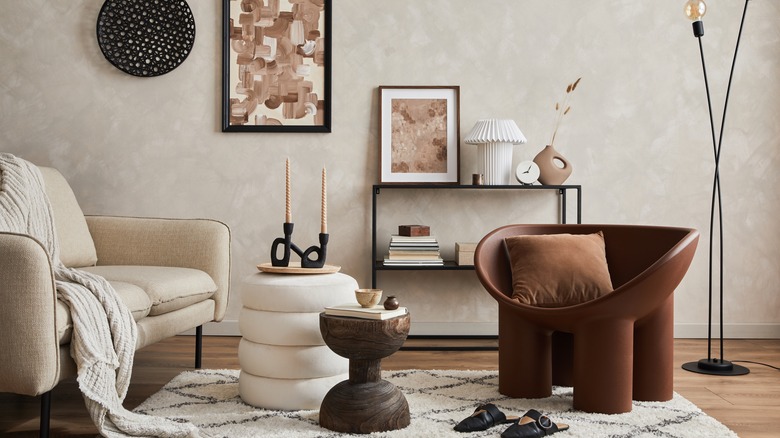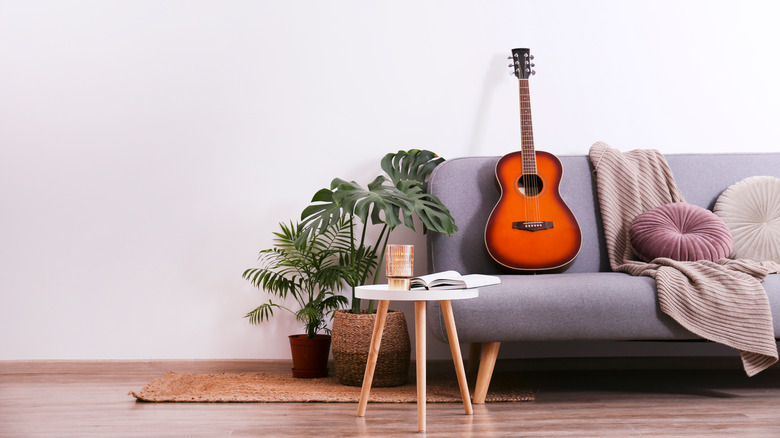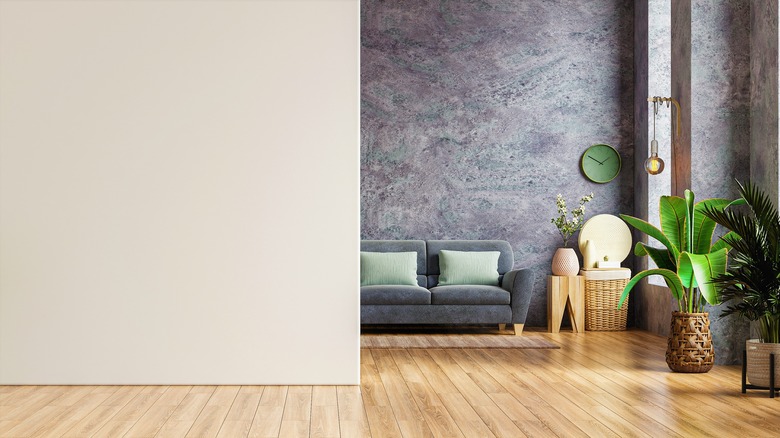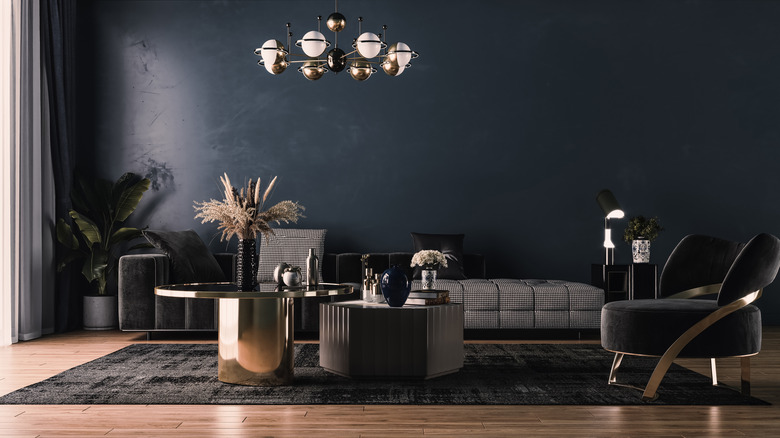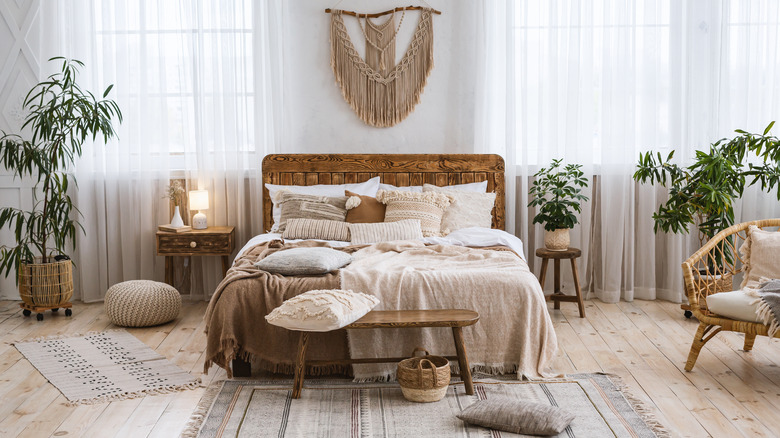5 Ways To Add Texture To Your Home Decor
Textures are all around us, and incorporating them into your home creates a multi-dimensional space that looks and feels inviting. Weaving texture throughout your décor allows everyone to interact with the areas more, and makes an already aesthetically pleasing room even more engaging. Visually pleasing interior design comes down to more than just matching color schemes and curated layouts; textures draw the eye in and make a room or collection more accessible, encouraging people to touch and feel their surroundings as well as enjoy them. According to Lux Deco, different materials, metals, and colors can all count as varying textures within the home.
Without texture to make your home pop, it can come across as flat. The depth different textiles create adds a vibrant atmosphere that pulls everyone into it. So when you are considering different home designs, make sure to incorporate different textures to breathe new life into your rooms.
These tips and tricks will help you bring new finishes and consistencies to a space that can benefit from a little extra wow factor. While some rooms might not seem like the place for assorted textures, those are the spots that can grow the most from them. Don't be afraid to explore, mix and match. The world is filled with different surfaces and qualities, so why should your home be any different?
1. Mix and match those fabrics
Wherever your home boasts fabrics and furniture, Lux Deco recommends using these to incorporate different textures. Combine a linen blanket with lush leather furniture, or combine soft velvet pillows with thick wool throws. Choose a rug with varying textures to pull all the different materials in a room together, like a knotted runner or an area rug made from Jute, which is known for its consistency and style.
For couches or chairs, choose a strong, solid base like linen, then mix in large and small throw pillows of varying texture to create a multi-dimensional appearance. If you have a lot of simplistic pieces throughout the room, choose throws or rugs that boast both different textures and prints to draw in the eye and produce a visually pleasing aesthetic. Try bringing in faux sheepskin rugs or other synthetic animal throws to give the feel of fur, which blends well with a variety of materials and furnishings.
2. Create depth in the foundations
Adding something as simple as textured wallpaper can transform a room, and bring a significant change to the atmosphere. Incorporating finishes like popcorn or orange peel ceilings and walls is another way to create dimension in an otherwise simplistic room, per Home Stars. If your home boasts a fireplace or mantel, use wood or stone to accentuate those areas and make them pop, giving visitors something to interact with besides smooth foundations. Combine different finishes like wood and cement, which play off of each other nicely and balance one another. Using a variety of materials and mediums will give a room a truly unique feel.
Wood, stone, clay, and sand can all be found together in nature. Weave these substances together within your house to layer different components, such as a fireplace set within a wall. By adding wood or stone, it pulls this section away from the wall it is built within, making it a statement rather than just another part of the room. Updating plain wallpaper can create new dimensions, especially those with patterns made to look textured, according to F&P Interiors.
3. Combine similar colors
Playing around with a particular color scheme can also provide texture within a space, says Lush Home. Try mixing the entire spectrum of a color across one room in order to summon depth. If your room has black paint, find black furniture in other shades to complement it, making each piece stand out without overpowering the others. White is another easy color to play with, since there are so many variations. Choose a simple white or beige base, then add in lighter shades of grey, cream, ivory, or taupe. Use complementary fixtures like silver or gold to accent the color scheme.
By using every different hue or tone of one color, you are creating a texture that can be built upon. It isn't all about the feel of something. The consistency of a room can also fall to how it is layered, making it feel more tangible and in depth. Playing with paints and varying shades will allow you to accentuate certain pieces or areas, all while creating a tactile surface.
4. Plants are textures, too
While interior design textures can mainly be accredited to materials, paint, and textiles, you can also use nature as a way to create dimension in the home, as noted by H.J. Oldenkamp Co. Plants are another origin of texture within a residence, because every species portrays different qualities and textures. Using flora and fauna to add varying consistencies is an easy way to change up the dynamic of a room. South Dakota State University also notes that plants provide extra oxygen and other benefits, so by using them throughout your abode you are boosting everyone's mood and health.
Combine lush, leafy greens like monstera and banana plants with smaller blooms like lavender or aloe vera for juxtaposition, giving surfaces a varying identity and appearance. Plant each one in different pots or vessels to enhance the play on textures, as many pots come in a variety of shapes, sizes, designs, and finishes. When working with plants, the only rules to follow are the ones governing their sunlight allowance, so place any species near each other that can absorb the same amount of sunshine. Besides that, there is no pattern to how you can mix and match greenery.
5. Avoid matching sets
Gone are the days of perfectly matched bedroom sets and designs. Bringing texture into your sleep space creates a multi-faceted interior that provides a welcoming and warm aesthetic. Instead of buying a furniture that is made to sit together, why not explore new horizons and mix and match a variety of different pieces. Find chairs and bedside tables from thrift stores or local stores that suit the theme of your boudoir without perfectly aligning. Combine different woods, or try other materials like metal that complements existing pieces.
Add varying lamps, light fixtures, and fabrics to accentuate the furniture, then find curtains or drapes that look good with the linens but aren't of the same material. Just like personalities, bedrooms should have different layers and mixtures which work together to create a unique space. According to Decorated, if you have space for multiple side tables or chairs, make sure to choose different sizes and shapes and contrasting woods or materials. These will complement one another without stealing the spotlight. Place an assortment of trinkets or frames to top off the amalgamation of textures for a truly engaging concept.
